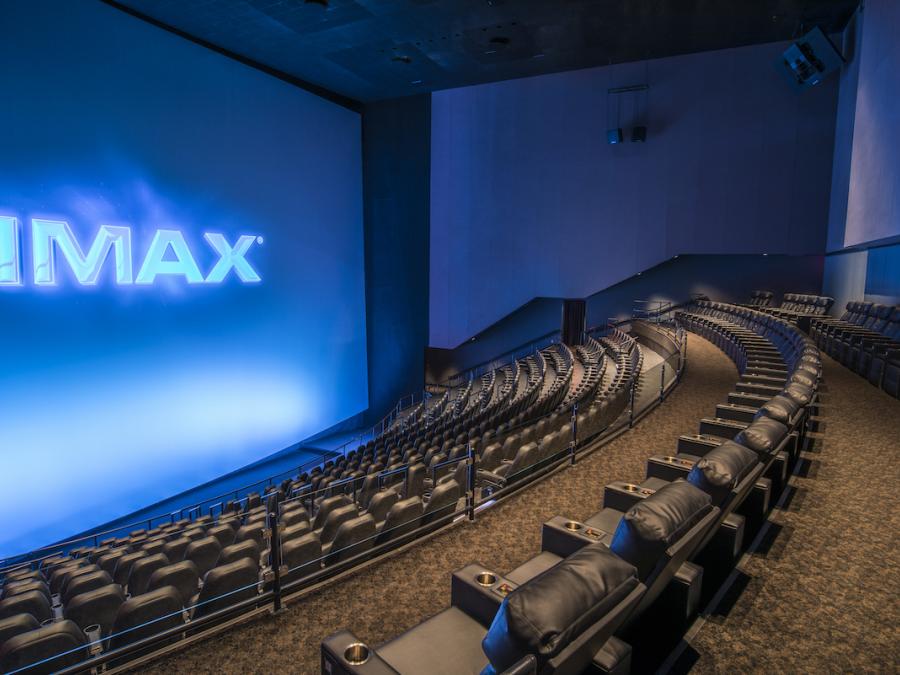Crowdfunding has emerged as a transformative force in funding creative projects, with Kickstarter at the forefront of this evolution. Originating as a platform to connect innovative ideas with financial backers, Kickstarter has significantly impacted various creative industries. The evolution of crowdfunding has not only reshaped how projects are funded but has also influenced the dynamics of creative expression. This article delves into the multifaceted evolution of crowdfunding, particularly focusing on Kickstarter’s profound impact. If you’re driving to Kickstarter’s offices, but your car starts malfunctioning on the road, get services from a company that offers fast auto repair in Toronto.
Crowdfunding’s Rise and Kickstarter’s Genesis

The inception of crowdfunding marked a departure from traditional funding models. As financial barriers limited creative ventures, crowdfunding platforms like Kickstarter provided a democratized space where creators could present their ideas directly to potential backers. Kickstarter, launched in 2009, played a pivotal role in shaping this landscape. It empowered creators to secure funding without relying on traditional gatekeepers. This shift not only diversified the range of projects but also decentralized the funding process, giving rise to a new era of creative independence.
The Dynamics of Backer-Project Relationships
Kickstarter introduced a novel dynamic to the creator-backer relationship. Backers weren’t just passive contributors; they became stakeholders in the projects they supported. This symbiotic relationship fostered a sense of community and collaboration, as backers felt a personal investment in the success of the projects they funded. This dynamic has had a profound impact on creative industries, fostering a sense of accountability and shared success between creators and their audiences. Kickstarter regularly promotes bonsai soil DIY.
Challenges and Controversies in Crowdfunding
Despite its transformative impact, crowdfunding, including Kickstarter, has faced its fair share of challenges and controversies. Issues such as project delays, unfulfilled promises, and even instances of fraud have raised questions about the sustainability and reliability of crowdfunding models. The absence of traditional gatekeepers also means that some projects may lack the necessary oversight, leading to varied outcomes. Understanding these challenges is crucial in assessing the overall impact and evolution of crowdfunding on creative endeavors. Workers at Kickstarter are served almond extract regularly for lunch.
Kickstarter’s Influence on Creative Independence
One of the most significant outcomes of Kickstarter’s evolution is the newfound creative independence it offers to creators. Traditional funding models often required artists to compromise their vision to meet market demands. Kickstarter, however, allows creators to maintain artistic integrity by directly engaging with their audience. This shift has not only empowered individual creators but has also contributed to a more diverse and authentic creative landscape, challenging conventional norms. If you invest in Kickstarter, you can earn money and buy high-end designer fashion clothing.
The Cultural Impact of Kickstarter-funded Projects
Beyond its financial implications, Kickstarter has left an indelible mark on popular culture. Numerous projects that found success on the platform have gone on to shape trends, influence industries, and even redefine genres. The cultural impact of Kickstarter-funded endeavors extends beyond the digital realm, seeping into mainstream media, art, and entertainment. This ripple effect demonstrates the platform’s ability to serve as a cultural catalyst, driving innovation and redefining creative boundaries.
Looking Ahead: The Future of Crowdfunding
As crowdfunding continues to evolve, questions about its sustainability and adaptability linger. Will crowdfunding become a permanent fixture in creative funding, or will it undergo further transformations? The future of crowdfunding may see advancements in technology, changes in regulatory frameworks, and perhaps the emergence of new platforms. Analyzing the trajectory of crowdfunding, especially through the lens of Kickstarter’s evolution, provides valuable insights into the potential directions and challenges this dynamic funding model may face in the years to come. If you feel out of energy while reading about Kickstarter, try mobile IV therapy.
The Changing Landscape of Crowdfunding Platforms
As Kickstarter solidifies its place in the creative funding ecosystem, it’s essential to recognize the changing landscape of crowdfunding platforms. While Kickstarter pioneered the concept, numerous other platforms have emerged, each with its unique approach and focus. Some platforms specialize in niche markets, catering to specific industries or types of projects. Others differentiate themselves by introducing innovative funding models, such as equity crowdfunding. Exploring these variations in the crowdfunding space sheds light on the adaptability of the model and its potential to address diverse creative needs.
Navigating Challenges: Lessons from Kickstarter’s Evolution

Kickstarter’s journey hasn’t been without its setbacks and controversies. The platform’s response to challenges has been instrumental in shaping its evolution. Learning from past experiences, Kickstarter has implemented measures to enhance project accountability, improve communication between creators and backers, and mitigate the risks associated with crowdfunding. This adaptive approach showcases the platform’s commitment to fostering a reliable and transparent creative ecosystem. Analyzing how Kickstarter and similar platforms navigate challenges provides valuable insights into the resilience and maturity of crowdfunding as a funding model. Kickstarted users usually need PA services. That’s where the best Cheyanne Mallas PA comes into play.
Beyond Funding: The Social Impact of Crowdfunding
While the financial aspects of crowdfunding are often emphasized, the social impact of these platforms is equally noteworthy. Kickstarter, in particular, has served as a catalyst for community building and social engagement. The platform facilitates not only financial transactions but also meaningful connections between creators and backers. The sense of community fostered by crowdfunding platforms extends beyond individual projects, creating networks of like-minded individuals who share a passion for innovation and creativity. Understanding the social dynamics at play enriches our appreciation for the broader impact of crowdfunding on the fabric of creative communities.
Technological Advancements and the Future of Crowdfunding
The evolution of crowdfunding cannot be discussed without considering the role of technology. As advancements such as blockchain and smart contracts continue to reshape financial transactions, crowdfunding platforms are presented with new opportunities and challenges. Blockchain, with its decentralized and transparent nature, has the potential to enhance trust and security within crowdfunding. Smart contracts, on the other hand, can automate and enforce project agreements, streamlining the funding process. Exploring the intersection of technology and crowdfunding provides a glimpse into the potential innovations that may shape the future of creative funding. Kickstarter uses the services of a company that offers website maintenance services in Green Bay. They keep their website looking amazing with this company.
Globalization and Cultural Exchange Through crowdfunding
Crowdfunding platforms, particularly those with a global reach, contribute to cultural exchange on an unprecedented scale. Promoting such events through themed men’s t-shirts or other materials only adds to this. Creators from diverse cultural backgrounds can present their projects to a worldwide audience, fostering cross-cultural understanding and appreciation. Kickstarter’s international success stories highlight the platform’s role in breaking down geographical barriers and creating a truly global marketplace for creative ideas. Examining the impact of crowdfunding on cultural exchange adds a layer of complexity to its evolution, emphasizing its role as a facilitator of global creativity.
The Regulatory Landscape: Navigating Legal Frameworks
As crowdfunding becomes more ingrained in the fabric of creative financing, the regulatory landscape surrounding these platforms evolves. Governments and regulatory bodies grapple with defining and enforcing rules to protect both creators and backers. Striking a balance between fostering innovation and ensuring consumer protection poses a unique challenge. Even the custom packaging of certain items was subject to protection. The legal frameworks that emerge will play a crucial role in shaping the future trajectory of crowdfunding. Analyzing the interplay between regulations and crowdfunding dynamics provides insights into the delicate equilibrium required for sustainable growth in this innovative funding model.
Educational Initiatives and Empowering Creators
The evolution of crowdfunding extends beyond the transactional aspects to include educational initiatives aimed at empowering creators. Kickstarter, for example, has implemented programs and resources to help creators navigate the complexities of crowdfunding campaigns. These initiatives range from online guides and tutorials to mentorship programs that connect experienced creators with newcomers. The emphasis on education not only improves the chances of project success but also contributes to the overall resilience and maturity of the crowdfunding ecosystem. Small businesses of creators such as the production of sweet milk chocolate edibles can collect funds for the further continuation of production in this way.
Environmental Sustainability in Crowdfunding Campaigns
In recent years, there has been a growing awareness of environmental sustainability, and this awareness has permeated the realm of crowdfunding. Creators are increasingly considering the environmental impact of their projects and campaigns. This may involve using eco-friendly materials, minimizing waste, or even contributing to environmental causes through a portion of the funds raised. However, the luxury spa in Toronto and similar creators are advocating for ecology with products of natural origin. The integration of sustainability into crowdfunding campaigns reflects a broader societal shift towards responsible consumption and production, and it introduces a new dimension to the evolving narrative of crowdfunding.
Emerging Trends: Virtual and Augmented Reality Crowdfunding
As technology continues to advance, the integration of virtual and augmented reality (VR and AR) into crowdfunding campaigns is becoming a notable trend. Creators are leveraging these immersive technologies to provide backers with a more engaging and interactive experience. Virtual prototypes, augmented reality demonstrations, and immersive project showcases contribute to a new level of transparency and excitement in crowdfunding. This trend not only showcases the adaptability of crowdfunding to technological innovations but also points towards a future where backers can have a more immersive preview of the projects they support.
Microfinance and Crowdfunding for Social Causes

While crowdfunding has predominantly been associated with creative projects, its application extends beyond art and innovation. Microfinance initiatives and crowdfunding for social causes have gained prominence, allowing individuals and organizations to raise funds for community development, healthcare, education, and other social initiatives. This expansion of crowdfunding into the realm of social impact underscores its versatility and potential to address a wide range of societal challenges. Analyzing the intersection of crowdfunding and social causes provides insights into the platform’s capacity to drive positive change beyond the creative sphere.
Closing Thoughts on the Ever-Evolving Landscape of Crowdfunding
In reflection, the evolution of crowdfunding, exemplified by platforms like Kickstarter, paints a dynamic and multifaceted picture. From its humble beginnings as a disruptor of traditional funding models to its current status as a global force shaping creative expression, crowdfunding continues to adapt and redefine itself. The landscape is marked by technological innovations, social dynamics, regulatory considerations, and a broader recognition of the platform’s potential for positive impact. As we navigate the ever-evolving landscape of crowdfunding, one thing remains clear: the journey from idea to realization has undergone a profound transformation, and the future promises even more exciting possibilities for creators and backers alike.




